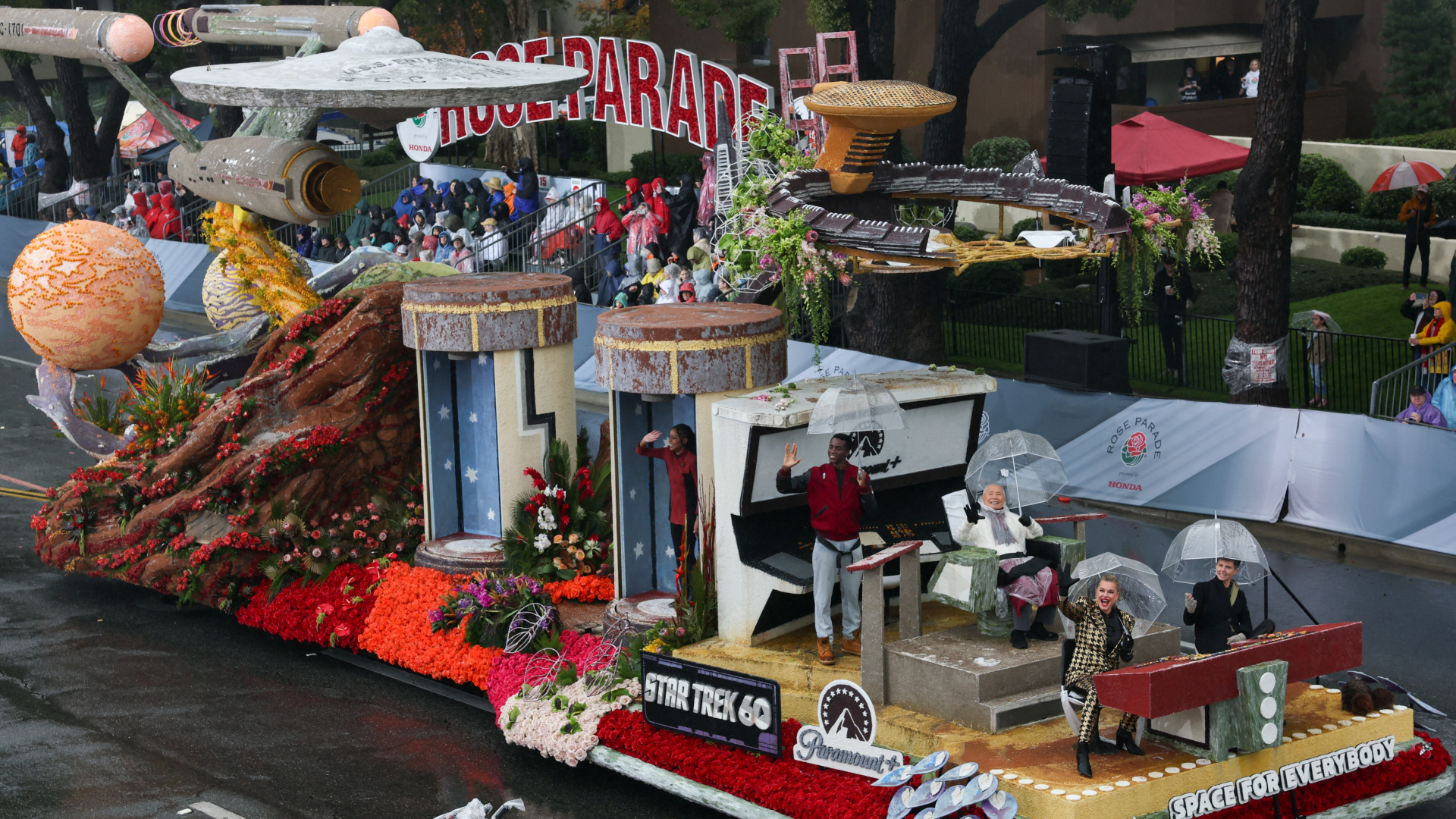Researcher Touts Saturn’s Titan As New Exploration Goal
HOUSTON, Texas - A leadingplanetary scientist said that Titan, one of Saturn's moons, should be targetedfor a new round of outer planet exploration.
Thanksto new data streaming in from the Cassini mission, said Jonathan Lunine,Professor of Planetary Sciences and of Physics at the University of Arizona in Tucson. Titandeserves prime-time scrutiny, perhaps using an airship to reveal the moon asnever before.
"(However)all plans for exploring the outer solar system, more or less, are in completeruins at the moment," Lunine said during a major lecture at the 37th Lunar andPlanetary Science Conference (LPSC), being held here throughout the week.
Luninesaid that the scientific community can start with a clean sheet of paper. "Wehave no baggage or anything that's weighing us down in terms of thinking aboutwhat we might do."
A state of mind
Theouter reaches of our solar system is not a destination, in the same sense thatthe Moon and Mars might be, Lunine said. "It's not a place in the sense of aplanet...it's a region. Some people might say it's a state of mind...but it'scertainly an important element of our solar system," he said.
Inthat immense expanse of space, most of the mass of our solar system is presenttoday, a region where most of the volume is located, Lunine pointed out. "Andit potentially has several places that are of interest in the search for lifeelsewhere and for clues to the origin of life."
Breaking space news, the latest updates on rocket launches, skywatching events and more!
Indeveloping a new outer solar system exploration strategy, Lunine said there arefundamental scientific questions that come to the forefront:
- How did our solar system arrive at the architecture that it has today?
- How did the giant planets and their satellite systems form?
- Are there habitable or interesting pre-biotic environments in the outer solar system? Furthermore, how best to explore them and access those interesting environments from the point of view of life and astrobiology?
Inorchestrating a next round of outer solar system study, Lunine focused on bothEuropa--a moon of Jupiter--and Saturn's Titan.
Europa: Questions and conflicting clues
Perhapsthe most "fundamental discovery" of the NASA Galileo mission that surveyedJupiter and several of its moons from 1995-2003, is that under Europa's icy faceis a liquid water layer - a layer that potentially is accessible, Luninesuggested.
Butquestions and conflicting clues remain about Europa: How thick is that icecrust? Just how variable is that icy covering? Answering these questions canliterally plunge scientists into another realm--the prospective that the moon'socean environment is habitable.
Galileoimagery suggests that the landscape of Europa is "very, very bizarre," Luninesaid. A landed vehicle there may or may not survive touching down on the "veryintricate and difficult landscape," he said.
Morestudies are needed at Europa to tease out information about the thickness ofthe moon's shell of ice, the nature of its surface, and how best to operatelanded vehicles on that moon, Lunine said. "Before one can land and drill downinto the ocean of Europa there's an awful lot of geophysics that has to bedone."
Titan: a subtle, complex place
Inhis view, Lunine suggested, new data stemming from the ongoing Cassini missionat Saturn--and the European Space Agency's Huygens lander on Titan--bolster thecase for returning to that celestial target. It offers astrobiologicalpotential too.
Thescientist said he has struggled over Titan compared to investigation of Europa,adding that Jupiter's moon is a fascinating and important target to go to. "Andmaybe it's the right target to go to first in the outer solar system. But we'vetried three times," Lunine said, noting a mission to Europa was most recentlydeferred in NASA's new budget.
"Titanis so mysterious...so hard to understand and so complex. But that's why it issuch a wonderful place," Lunine said. "It's not a world that has one newspaperheadline-type feature. It's just a subtle, complex place."
Luninepainted a futuristic picture of airship or balloon exploration craft that pickout landing sites "on the fly"--freely navigating in Titan's winds moving fromspot to spot.
Titanis just waiting for us...Titan wants us," Lunine suggested. "There is no body inthe outer solar system that is better designed for exploration than Titan."
- Special Report: Cassini's Mission to Saturn and its Moons
- Cassini Scans Titan for Subsurface Ocean, Methane Ice
- Unmasking Titan: Volcano Spotted on Saturn's Smoggy Moon

Leonard David is an award-winning space journalist who has been reporting on space activities for more than 50 years. Currently writing as Space.com's Space Insider Columnist among his other projects, Leonard has authored numerous books on space exploration, Mars missions and more, with his latest being "Moon Rush: The New Space Race" published in 2019 by National Geographic. He also wrote "Mars: Our Future on the Red Planet" released in 2016 by National Geographic. Leonard has served as a correspondent for SpaceNews, Scientific American and Aerospace America for the AIAA. He has received many awards, including the first Ordway Award for Sustained Excellence in Spaceflight History in 2015 at the AAS Wernher von Braun Memorial Symposium. You can find out Leonard's latest project at his website and on Twitter.
